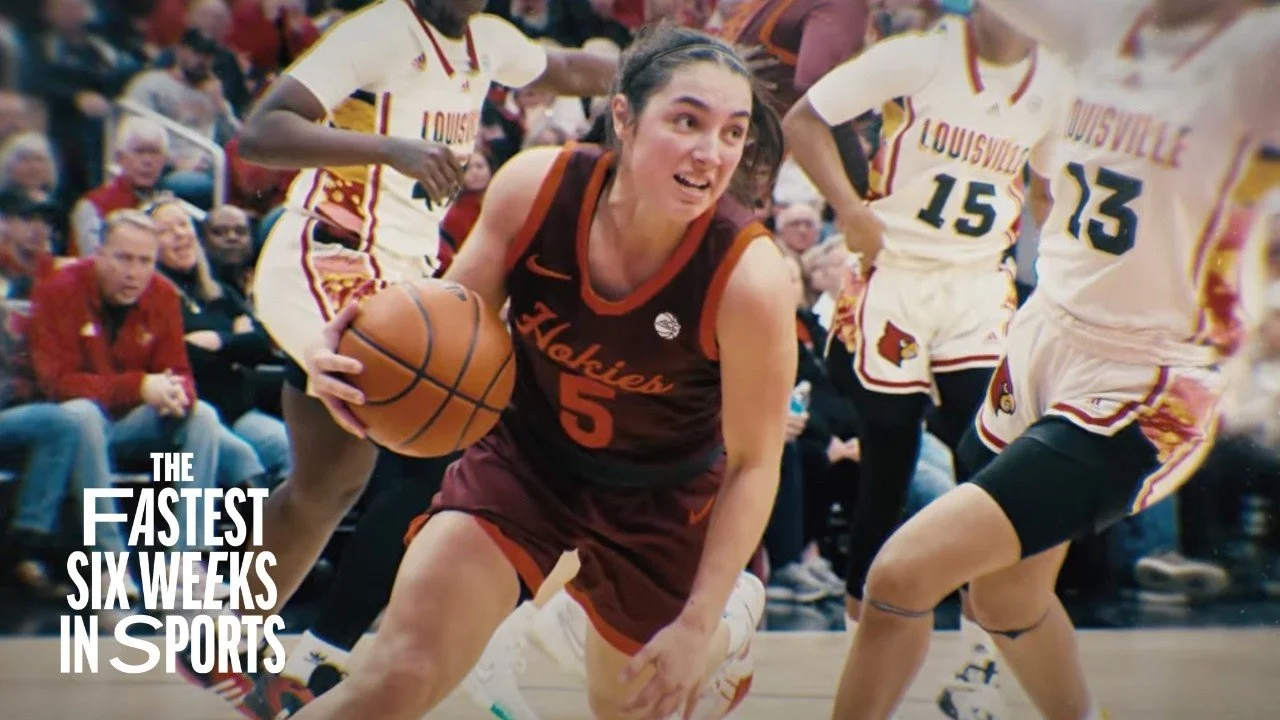Form and cliffhangers in The Fastest Six Weeks in Sports
Directed by Lauren Fisher and released on Roku, The Fastest Six Weeks in Sports follows two WNBA draft prospects as they wrap up their college career. While the NBA has six months before their season starts, these two players have six weeks to move from their college experience to whatever city they will play for.
Like the six weeks in real life, Six Weeks the show blasts out of the gate. It encapsulates the high energy of basketball, combining archival footage and headlines with filmed verité of the players. While this could just be a flashy way to grab your attention, Fisher uses the energy to capture the feeling of the race against the clock these players face.
But personal moments are the meat of the series. The camera follows each player, from last practice with their college coach to finding out where they will play/be moving their life to. It provides an intimate look into these two women, and what it’s like to transition from their college experience to the fame, stature, and wide-open world of the WNBA.
This film breakdown is part of The Radio Edit, a newsletter for documentary filmmakers.
Get it straight to your inbox by subscribing!
What quickly becomes apparent is the unique shape of Six Weeks. The six episodes range from 9 minutes to 16 minutes. It almost feels like a Youtube series, as if The Last Dance showcased Michael Jordan next to Mr. Beast’s latest episode. The format fits the energy, in this case. Being released on Roku gives the show freedom to be what it wants to be and makes each episode pack a punch that is extremely watchable.
The Fastest Six Weeks in Sports features one of the things I love about documentaries: a hidden corner of the world where people face gut-level obstacles that demand to be conquered, all while the tension ratchets up with a looming deadline. It’s a fantastic story, set in a fascinating world, wrapped in a unique structure, and I’m here for it.
Tips
Your story no longer has to fit a pre-defined mold.
What shape does your story want to take? We aren’t locked into movie-length or even typical tv show length. Find the length and structure that best fits your story and the platform you’re releasing on.
Find your cliffhangers.
A film is propelled by powerful questions. Episode 1 or Fastest Week ends as the clock ticks down to draft day, with each character traveling to face that moment. Look for questions that mean something deeply to the characters. Viewers will care about it too and keep watching.
Need help finding the form and propelling questions in your film? Let's chat.
